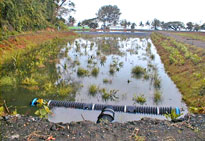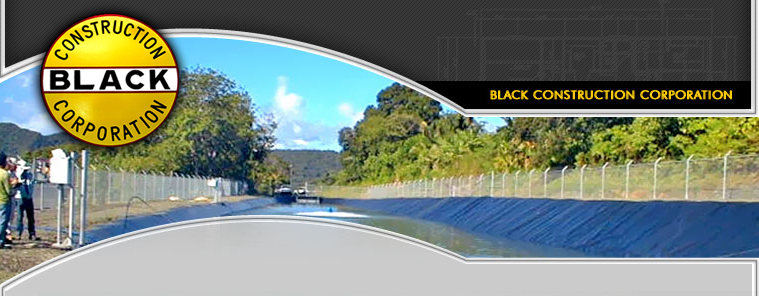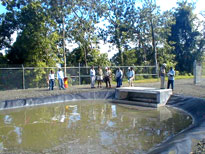Malakal Natural Wastewater Treatment Park Design/Build Malakal, Koror State, Republic of Palau
 driveways, parking, drainage, landscaping, and painting works.
driveways, parking, drainage, landscaping, and painting works.
Additionally, the former headworks and secondary clarifier were emptied, backfilled and capped in place and the existing chlorine contact tank was cleaned and secured for potential future use. Startup assistance and basic operation and maintenance training were provided to ROP Sewer Branch operators at the conclusion of the project.CHALLENGES
Startup assistance and basic operation and maintenance training were provided to ROP Sewer Branch operators at the conclusion of the project.CHALLENGES
During the course of the project the ROP Government added 86 days to the contract period for rain days due to the extremely wet tropical climate of Palau which has an average rainfall of 150 inches per year. To help minimize rain delays during the project, Black routinely graded the site to maintain positive drainage, sealed soil areas with smooth drum rollers, and covered up soil stockpiles and embankment fills with tarps and plastic sheeting before leaving the job each evening. Where necessary, sump pits, trash pumps and  temporary sedimentation basins were used to dewater low areas. As standard practice, Black maximized earthwork production during periods of dry and sunny weather whenever they occurred, including Sundays and holidays.
temporary sedimentation basins were used to dewater low areas. As standard practice, Black maximized earthwork production during periods of dry and sunny weather whenever they occurred, including Sundays and holidays.
During construction intermittent upland surface flows and underground seeps above the primary pond excavation and wetlands cell A were discovered which were not picked up by the subsurface soil investigation. These had to be addressed to prevent unnecessary flow into the treatment facilities. Black, with its design engineer’s concurrence, used a combination of concrete rubble masonry check dams, lean concrete swales and underlying French drains on the uphill sides of the primary ponds and wetlands cell A to intercept this stormwater and direct it to natural drainage courses.
[hr]


